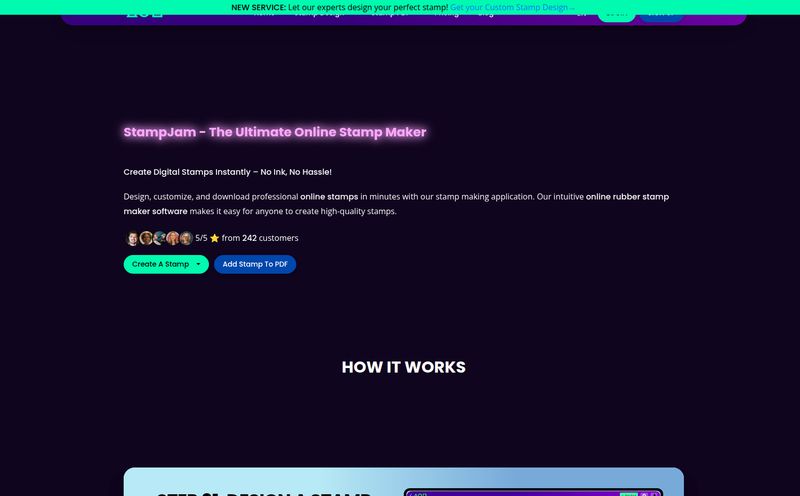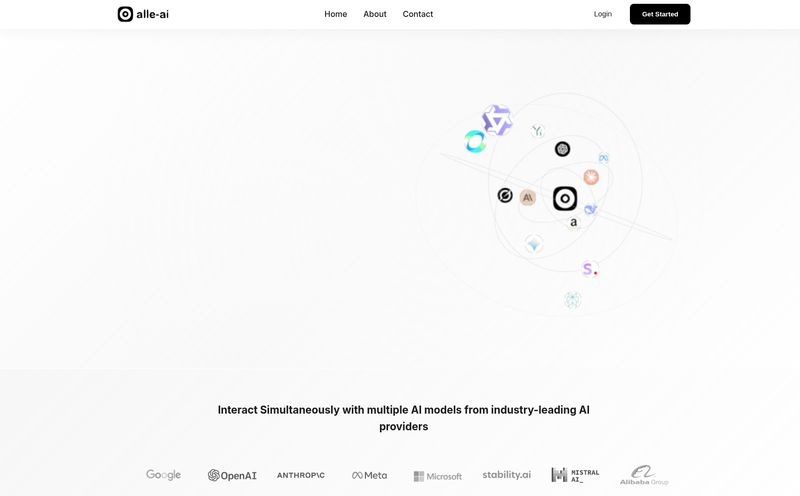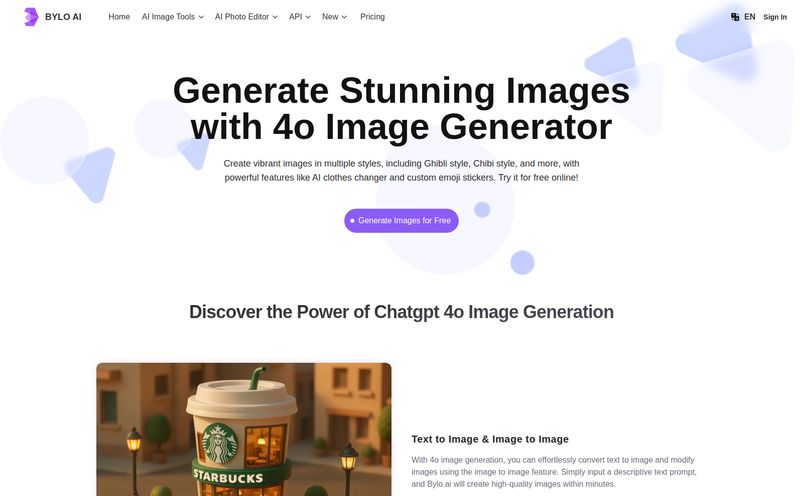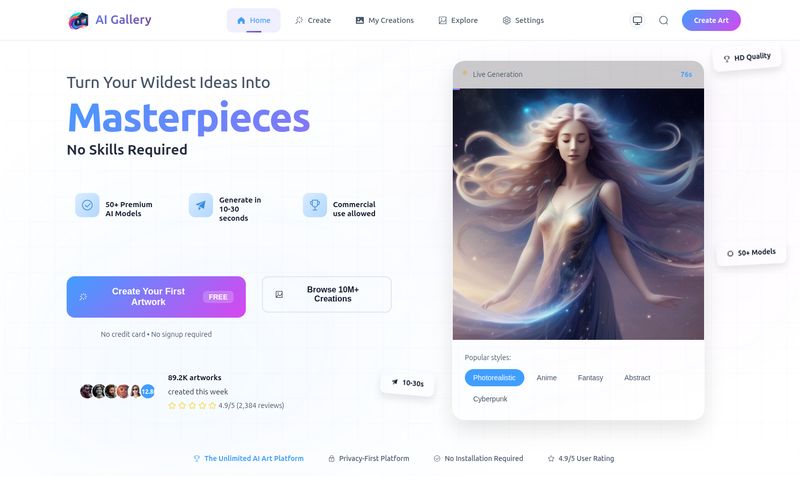Remember the glorious, blocky days of the PlayStation 2? I sure do. The feel of that DualShock 2 controller, the iconic startup sound, the hours lost to worlds built from delightfully chunky polygons. We're talking Metal Gear Solid 2, Final Fantasy X, Grand Theft Auto: San Andreas. These weren't just games; they were cultural touchstones. And their look, that slightly janky, low-poly aesthetic, is burned into the brains of a generation.
Lately, that Y2K, early-2000s vibe is making a huge comeback. You see it everywhere, from fashion to music videos. As an SEO guy who's always watching trends, I can tell you that nostalgia is one of the most powerful drivers of traffic online. People are actively searching for ways to get that retro feel. And that, my friends, is where I stumbled upon a neat little tool called PS2 Filter AI.
It promises one thing: to turn your modern, high-res photos into something that looks like it was ripped straight from a PS2 cutscene. But does it deliver? Or is it just another flash-in-the-pan AI novelty? I had to find out.
So, What Exactly is This PS2 Filter AI Tool?
At its core, PS2 Filter AI is a specialized AI image generator. You give it a photo, and it gives you back a version that’s been artistically… well, downgraded. In the best way possible. It uses AI algorithms, specifically something they mention called "replicate face to many" technology, to analyze the features in your photo and rebuild them using the visual language of early 3D graphics.
Think of it less as a simple filter, like the ones on Instagram, and more as a re-interpretation. It’s not just adding grain or changing colors. It’s actually changing the geometry, simplifying textures, and adding that tell-tale blockiness that screams “2002.”
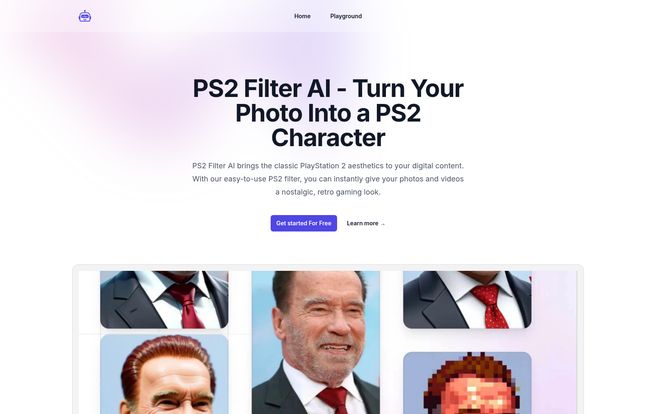
Visit PS2 Filter AI
Who is this for? Honestly, a wider audience than you might think. Streamers could use it for some seriously cool custom thumbnails. Social media managers looking to create pattern-interrupting content for TikTok or Insta will have a field day. And of course, there's people like me, who just want a ridiculously cool, nostalgic profile picture that stands out from the sea of corporate headshots.
Getting Your Hands Dirty: My First Run with the Filter
The first thing I noticed? The simplicity. There's no bloated interface, no thousand-and-one sliders to get lost in. It’s a website, not some clunky software you have to install. The process is dead simple.
Upload. Click. Wait a few seconds. And boom. There I was, looking like a background character you might bump into in Silent Hill. The result was genuinely impressive. It didn’t just pixelate my face; it captured the essence of the PS2 era. The flat lighting, the slightly-off textures, the sharp polygonal edges. It was perfect.
I even tried it on a photo of my dog, and let me tell you, the results were something straight out of a low-budget horror game. Terrifying, but hilarious. It seems to work best with human faces, which makes sense given the tech.
The entire experience was frictionless. In an age where every tool wants you to sign up for a newsletter, attend a webinar, and sell your firstborn, the directness here was a breath of fresh air.
The Good, The Bad, and The Low-Poly
No tool is perfect, of course. After playing around for a while, I got a pretty good sense of its strengths and weaknesses.
Capturing the Charm of Yesteryear
The biggest pro is how well it nails the specific aesthetic. This isn't just a generic '8-bit' or 'pixel' filter. It has a specific understanding of the PlayStation 2's graphical style. The way it handles faces, in particular, is what sells the effect. It's an instant nostalgia hit. And because its so easy to use, you can go from idea to a unique piece of content in under a minute. That speed is a massive advantage for anyone in the content game.
Is It a One-Trick Pony?
Now for the downside. This tool does one thing. It applies a PS2 filter. That’s it. There are no other styles, no other eras. It’s the definition of a niche tool. Some might see this limited functionality as a major drawback, but in my experience, I kind of appreciate the focus. Instead of being a mediocre jack-of-all-trades, it’s a master of one. Its a fun tool but you have to know what you're getting into.
The AI also has its limits. Complex backgrounds can sometimes confuse it, and as my dog experiment proved, it’s definitely optimized for human faces. You need to feed it a relatively clear, well-lit photo to get the best results.
Let's Talk Money: PS2 Filter AI Pricing
Alright, the part everyone always scrolls to first: how much does it cost? The good news is, you can try it for free. The site mentions getting a free credit to generate an artwork, which is enough to see if you like the results.
If you want to do more, you buy credits. I actually like this model way better than a recurring subscription for a tool I might only use for specific projects. Think of it like a video game arcade from back in the day—you buy a pocketful of tokens (credits) and use them when you want.
Here’s a quick breakdown of their one-time payment options:
| Price | Image Credits | Cost Per Image | Key Features |
|---|---|---|---|
| $7.9 | 15 | ~$0.53 | High-quality images, Ads-free |
| $9.9 (Most Popular) | 50 | ~$0.20 | Fast generation, High-quality, Ads-free |
| $58.8 | 600 | ~$0.10 | Fast generation, High-quality, Ads-free |
For what it is, the pricing feels fair. For less than ten bucks, you get 50 generations. For a streamer who wants to make 50 unique thumbnails, that's an incredible deal. For a social media agency, it's a rounding error. I also thought it was interesting that they accept cryptocurrency payments—a small detail, but it shows they're tapped into a certain online subculture.
Who Should Actually Use This Thing?
This isn't going to replace your primary photo editor, but it’s a fantastic specialist tool for a few key groups:
- Content Creators: If you're a YouTuber, Twitch streamer, or TikToker with an audience that appreciates gaming culture, this is a no-brainer for creating unique visuals that grab attention.
- Social Media Managers: In a sea of bland stock photos and Canva templates, an image like this will stop the scroll. It's a pattern interrupt. Use it for a quirky campaign or to build a specific brand voice.
- Indie Devs and Artists: Need some quick, stylized promotional art or character concepts? This could be a fun and fast way to generate ideas.
- Anyone Feeling Nostalgic: If you just want a fun new avatar for Discord or Twitter that pays homage to the good old days, this is the easiest way to do it.
A Few Tips for Getting That Perfect Blocky Look
After a bit of trial and error, I found a few things that help get better results. First, start with a clear, front-facing headshot. The AI seems to be trained on this kind of image, so it gives the most coherent output. Good, simple lighting helps too—avoid heavy shadows or chaotic backgrounds.
Don't be afraid to experiment. The FAQ on their site mentions playing with different "filter intensities," and while that option wasn't immediately obvious on the main playground, it's worth looking for. Sometimes the first generation isn't perfect, so running the same photo a second time can yield a slightly different, maybe even better, result.
The Final Verdict: Is The PS2 Filter AI Worth a Credit?
So, what's the final word? The PS2 Filter AI is a fantastic, niche tool that knows exactly what it wants to be. It’s not trying to compete with Midjourney or DALL-E in creating photorealistic masterpieces. It has a much more specific, and in my opinion, more charming goal: to perfectly replicate a beloved digital aesthetic.
It’s a powerful reminder that not every tool needs to do everything. Sometimes, doing one thing exceptionally well is more than enough. If you have any fondness for that era of gaming, or if you're a creator looking for a unique visual hook, then yeah, it's absolutely worth your time and the small price of a few credits.
Frequently Asked Questions about PS2 Filter AI
- Is the PS2 Filter AI really free?
- Yes, you can get started for free. They give you a free credit to generate your first image so you can see how it works without paying anything. After that, you'll need to buy credits for more images.
- How does the AI actually create the PS2 look?
- It uses a type of AI model that's been trained on images and graphics from the PlayStation 2 era. It analyzes the key features of your photo (like your eyes, nose, and jawline) and then reconstructs them using the low-polygon, simple-texture style characteristic of those games.
- Can I use this on my phone?
- Yep! It’s a web-based tool, so as long as your phone has a web browser, you can upload a photo and use it directly. No app installation required.
- What kind of photos work best with the filter?
- From my testing, clear, well-lit, front-facing headshots work the best. Photos with very busy backgrounds or unusual angles can sometimes produce weird (though often funny) results.
- Are the paid credits a subscription or a one-time purchase?
- They are one-time purchases. You buy a pack of credits, and they're yours to use until they run out or expire (the different tiers have different expiration dates). There’s no recurring monthly fee.
A Fun Trip Down Memory Lane
In the end, playing with the PS2 Filter AI felt less like work and more like... well, fun. It's a playful piece of tech that taps directly into a powerful cultural memory. It's a testament to how creative and specific AI tools are becoming, moving beyond simple utility and into the realm of artistic expression and nostalgic fun. For any content creator, that's a space worth exploring.
